To understand how an organ works, you first need to know how the cells make it absorb, secrete, and excrete substances. The cell membrane controls molecule movement in and out of cells. The cell membrane is the gatekeeper to cells and the organs they form.
Water-Soluble and Lipid-Soluble Substances
Water-soluble and lipid-soluble are the two major types of substances that move in and out of cells. Ions, such as Na+, and polar molecules, such as glucose and water, are water-soluble. Water is a polar molecule with both a positive and negative changed pole. Water’s polarity allows it to form hydrogen bonds with ions, itself, and other polar molecules. For instance, the negative end of water forms a hydrogen bond with Na+, and the positive end forms a hydrogen bond with Cl– (e.g., how water separates NaCl into Na+ and Cl– ions). Hydrogen bonds always form between positive hydrogen in one substance and a negative ion in another substance.) However, polar molecules and ions are not soluble in lipids, such as oil. Lipid-soluble, or nonpolar, molecules can dissolve in other nonpolar substances, but not water. Nonpolar molecules do not have a charge; so, water cannot form a hydrogen bond. The lack of bonding is why water (polar) and oil (nonpolar) do not make up a solution. The water or lipid solubility of a substance determines how it can or can’t enter or leave a cell.

The Phospholipid Bilayer (aka Plasma Membrane)
Most of the cell membrane comprises phospholipids. A phospholipid is a lipid with both a hydrophilic or water-liking end (polar head) and a hydrophobic or water-hating end (nonpolar tails). The solutions inside and outside a cell are water-based solutions that attract the polar heads and repel the nonpolar tails. If cell membranes consisted of a single layer of phospholipids, the cell would form a micelle. A micelle is a ball of phospholipids where the polar heads face the fluid outside a cell, and the nonpolar tails make up the ball’s internal portion. Since the nonpolar repels water, there would be no fluid inside the micelle. Therefore, cell membranes comprise a bilayer where the polar heads face the fluids inside and outside the cell. The nonpolar tails comprise the middle of the membrane. The structure of the phospholipid bilayer regulates what can enter and leave a cell.


The phospholipid bilayer is a dynamic membrane because the phospholipids are always moving. Nonpolar molecules can move across the plasma membrane via simple diffusion (see figure to the right) because they can squeeze through the polar heads and move within the nonpolar tails. Polar molecules cannot diffuse across the lipid bilayer because they cannot move through the layer of nonpolar tails. (No wall is impenetrable to something it is trying to keep in and out, and the cell membrane is no exception. Water and specific ions can sneak across the phospholipid bilayer; however, only a fraction do this, and some cell membranes are more accessible than others.)
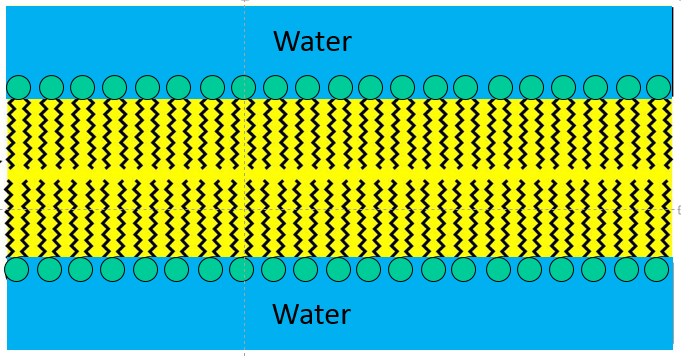
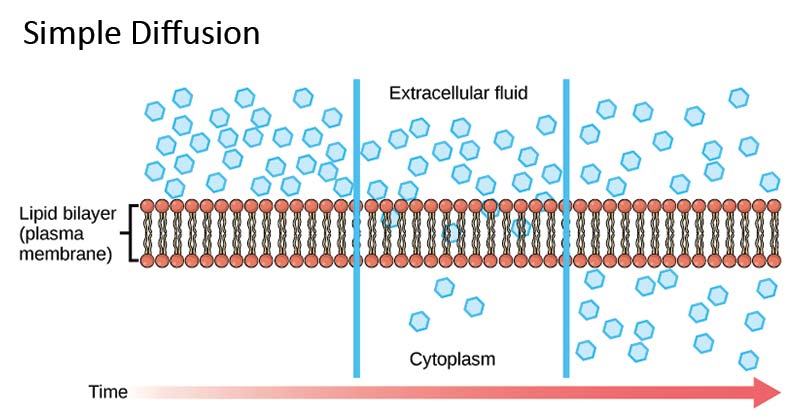
Not all substances can move through the cell membrane. Instead, the cell membrane regulates which molecules can move across the membrane, making the cell membrane selectively permeable.
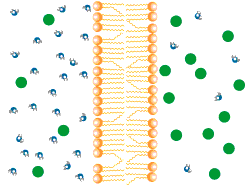
Embedded in the cell membrane are protein doors that allow charged solutes to move in and out of cells. When charged solutes (except water) move passively through protein doors, it is facilitated diffusion. Aquaporins are protein doors that only allow water to move through the plasma membrane via osmosis.
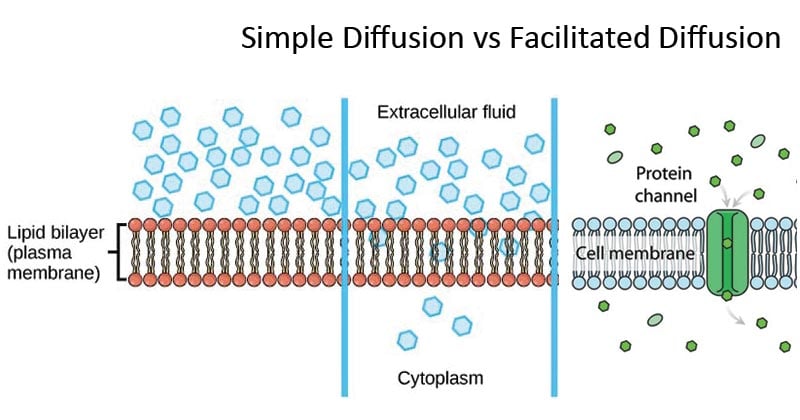
Proteins Floating in a Sea of Phospholipids
There is a wide range of proteins that float around the cell membrane. Each type of protein has a specific function. Without plasma proteins, the physiology of the cell would differ from its current form.

Receptor proteins have a groove where hormones with a complementary shape can attach (similar to how a substrate attaches to an enzyme’s active site). When a hormone binds to a receptor protein, it starts a cellular response. For example, insulin receptors are abundant in skeletal muscle cells’ membranes since muscle requires a lot of glucose to function. Since glucose is polar and cannot diffuse through the phospholipid bilayer, it needs to move in via a door (channel protein). However, a locked door requires a hormone to unlock it. When the hormone insulin binds to its receptor protein, it unlocks a channel protein (door), and it opens, allowing glucose to enter the cell.
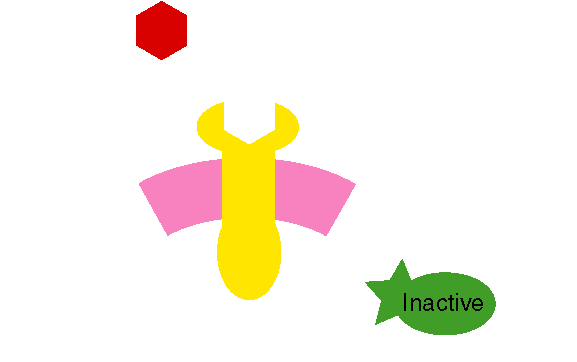
Channel proteins use passive transport to move smaller ions and polar molecules through the membrane. When a molecule moves through a channel protein, it is called facilitated diffusion.

Protein pumps pump ions from areas of low concentration of a solute to an area of high concentration. The pumping of ions requires the cell to use energy (ATP).

Cells can distinguish the cells of your body from foreign cells via membrane proteins called self-antigens. Each person has a unique self-antigen, and your immune system will attack and destroy any cell with a different antigen. Genetics determines the shape of an individual’s self-antigen, so if you have an identical twin, the two of you are the exception to the rule and share the same self-antigen.

Passive Transport
Passive transport is the process in which a substance moves down its concentration gradient. The concentration gradient is formed when one side of a cell membrane has more of a specific substance(high concentration) than the other side (low concentration). Ions and compounds want to move from high to low concentrations until they reach equilibrium (the same amount of a substance on both sides of a cell membrane). A cell uses passive transport to gain nutrients and water and eliminate waste or an overabundance of nutrients. The data table below defines and gives examples of different passive transports.

Active Transport
Sometimes a cell needs more of something that moves against the substances’ concentration gradient, or the cell needs to get rid of something too large to fit through a carrier protein. Gaining substances against their concentration gradient or getting rid of big stuff requires a cell to use energy via active transport.

I can’t believe it. You went the whole chapter without writing something stupid.
Oh, my bad. Hamsters are a dragon’s preferred pet. Dragons buy their hamsters cute accessories. . .

AP Bio Prep
Here is a link to my Physio chapter on the cell membrane.